Cat Vomit Color Chart Explained: It Can Save Your Cat’s Life!

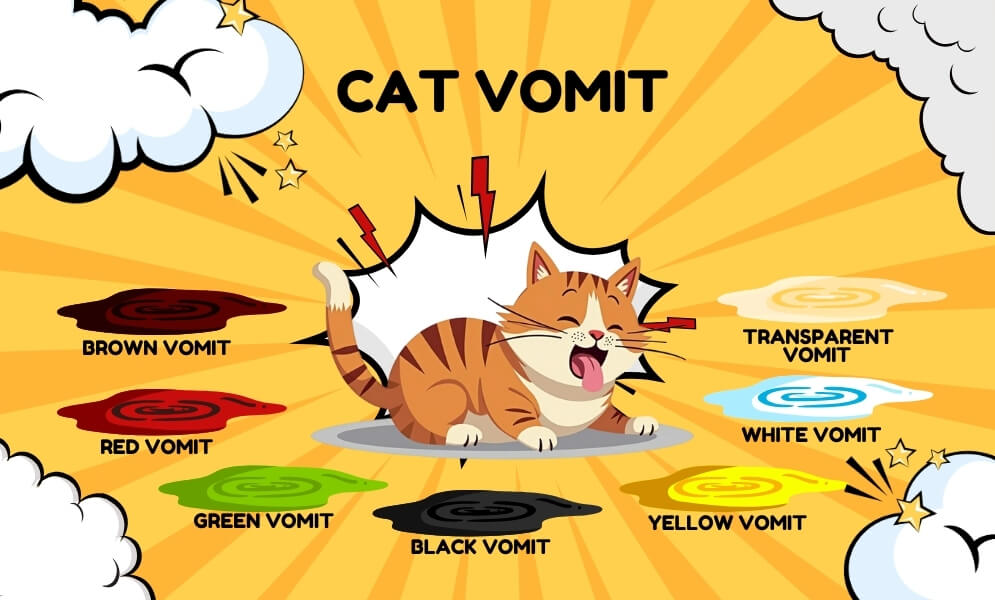
If you have been a cat parent for a long time, then you’re no stranger to the occasional and unpleasant surprise of finding a puddle of vomit on the floor. Cat throwing up occasionally is a normal thing, but if it happens more frequently, you should start paying attention to the color and consistency of the vomit.
It will give you valuable insights into their health and well-being, especially since most of the time, frequent or persistent cat vomiting can indicate an underlying health issue. Hence, you need to know about all the different types of cat vomit colors.
A cat vomit color chart is a very handy tool for this purpose and will help you get the answer to the question, ‘Why is my cat throwing up.’ In this article, we’ll explain how you can use the Cat Vomit Color Chart to better understand the causes behind situations like cat throwing up white foam and address the same as quickly as possible.
Understanding the Importance of Monitoring Cat Vomit
You know by now that occasional vomiting is normal for cats. But if you notice that your cat is vomiting once a week or repeatedly, then you should start monitoring the frequency, color, and consistency of their vomit.
This information can help you identify potential health concerns early on and take appropriate action. It will enable you to prevent more severe complications down the line.
The Cat Vomit Colour Chart is a valuable tool for decoding the meaning behind different vomit colors. So, if you are wondering, ‘Why does my cat keep throwing up’ this chart will help you to find the answer quickly. You can then make informed decisions about your cat’s well-being.
Take a quick look at the cat vomit color chart given below to learn how many types of cat vomit there are. You can then dive into the detailed explanation behind each kind of cat vomit color.
Cat Vomit Colour Chart
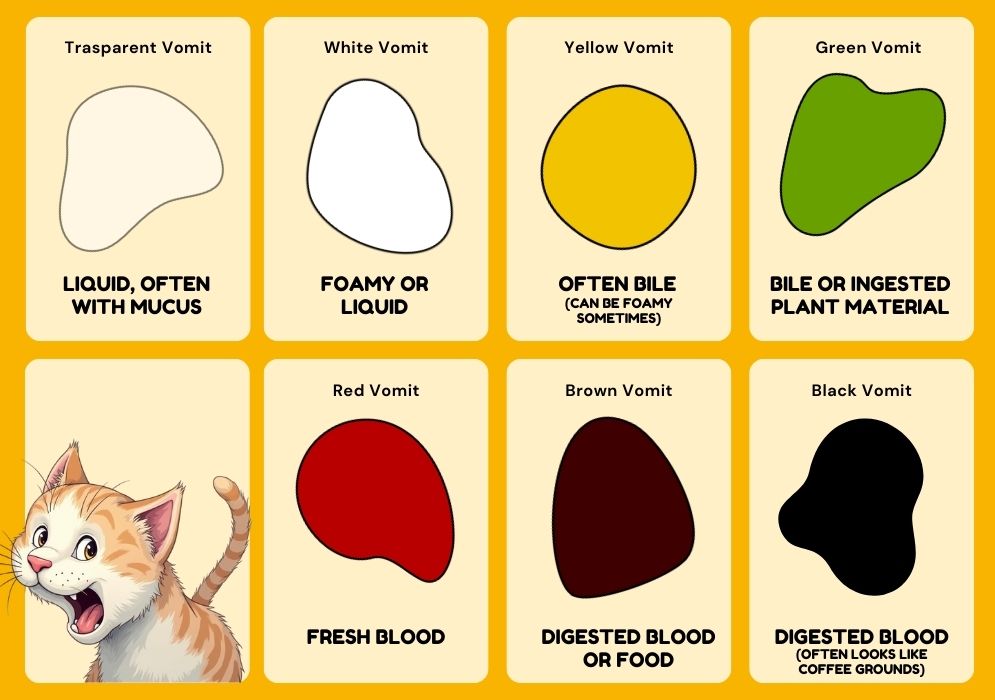
You can go through the cat vomit color chart given below to check what your cat’s vomit color says about their health:
| Color | Description | Possible Causes |
| Clear | Liquid, often with mucus | Gastric irritation, regurgitation of water or saliva |
| White | Foamy or liquid | Empty stomach, gastritis, or gastroesophageal reflux disease (GERD) |
| Yellow | Often bile; can be foamy sometimes | Empty stomach, liver or gallbladder issues, or gastrointestinal upset |
| Green | Bile or ingested plant material | Liver or gallbladder issues, or ingestion of grass or plants |
| Red | Fresh blood | Gastrointestinal bleeding, ulcers, or ingestion of a foreign object |
| Brown | Digested blood or food | Gastrointestinal bleeding, severe constipation, or ingestion of fecal matter |
| Black | Digested blood (often looks like coffee grounds) | Severe gastrointestinal bleeding, ulcers, or ingestion of a foreign object |
Significance of Different Types of Cat Vomit Color: Explained in Detail
Here’s a detailed insight into what are the different types of cat vomit color and what it says about your cat’s state of health.
Type 1: Clear liquid vomit
Clear liquid vomit is often the result of an empty stomach, stomach acid, or excessive drooling. It can also be regurgitation from the esophagus. The cause of cat vomiting clear liquid vomit can range from something minor, like hairballs, to something major, like cancer. So, it’s essential to monitor your cat’s appetite and hydration levels. If the clear liquid vomiting persists or is accompanied by other symptoms, you must consult your veterinarian.
Type 2: White Foam Vomit
Cat throwing up white foam vomit is a common occurrence. Especially if your cat has been grooming itself excessively for several days and in the process, has swallowed its own hair. The white foam you see is typically a combination of saliva and air that has been swallowed, and the clear liquid is likely bile or stomach acid.
While it’s generally harmless, excessive white foam vomiting can indicate an underlying gastrointestinal issue or hairball obstruction. Some other probable causes of cat vomiting white foam are diabetes, parasites, chronic kidney disease (CKD), Hyperthyroidism, and Hepatic Insufficiency.
Type 3: Yellow or Green Vomit
Yellow or green vomit is often a sign of bile or partially digested food mixed with bile. Bile is a digestive fluid produced by the liver and stored in the gallbladder. The yellow color of the bile is a result of bilirubin, which is an orange-yellow liquid created in the liver when the cat’s body breaks down hemoglobin.
While occasional yellow or green vomit may not be cause for immediate concern, frequent occurrences could indicate an underlying issue, such as:
- Gastrointestinal obstruction
- Pancreatitis
- Liver disease
- Gallbladder problems
Type 4: Brown vomit
Brown vomit typically indicates the presence of digested blood in the vomit. This can be a sign of various gastrointestinal issues, including:
- Ulcers
- Inflammatory bowel disease
- Gastrointestinal bleeding
- Foreign body obstruction
If you notice brown vomit, it’s crucial to seek veterinary attention promptly, as it may be indicative of a serious underlying condition.
Type 5: Red or pink vomit
Red or pink vomit is a clear indication of fresh blood in the vomit. This can be a sign of several potential issues, such as:
- Gastrointestinal bleeding
- Trauma or injury
- Stomach ulcers
- Certain types of cancer
If your cat is vomiting red or pink vomit, it’s essential to seek immediate veterinary care, as it may be a medical emergency.
Type 6: Black vomit
Black vomit, also known as “coffee grounds” vomit, is a concerning sign as it indicates the presence of digested blood in the vomit. This can be a symptom of various serious conditions, including:
- Gastrointestinal bleeding
- Ulcers
- Certain types of cancer
- Ingestion of toxins or foreign objects
If you notice black vomit, it’s crucial to seek veterinary attention immediately, as it may be a life-threatening situation.
Why is My Cat Throwing Up Undigested Food?
If you notice your cat vomiting up undigested food, it could be an indication of a few potential issues:
- Eating too quickly: Cats that gulp down their food too fast may regurgitate it before it can be properly digested.
- Food intolerance or allergy: Some cats may have sensitivities to certain ingredients in their food, causing vomiting as a reaction.
- Gastrointestinal issues: Vomiting undigested food can also be a symptom of conditions like inflammatory bowel disease or gastrointestinal obstruction.
If your cat is frequently vomiting undigested food, it’s a good idea to consult with your veterinarian to rule out any serious underlying conditions and to get advice on managing their diet and eating habits.
What Are Some Common Causes of Cat Vomiting?
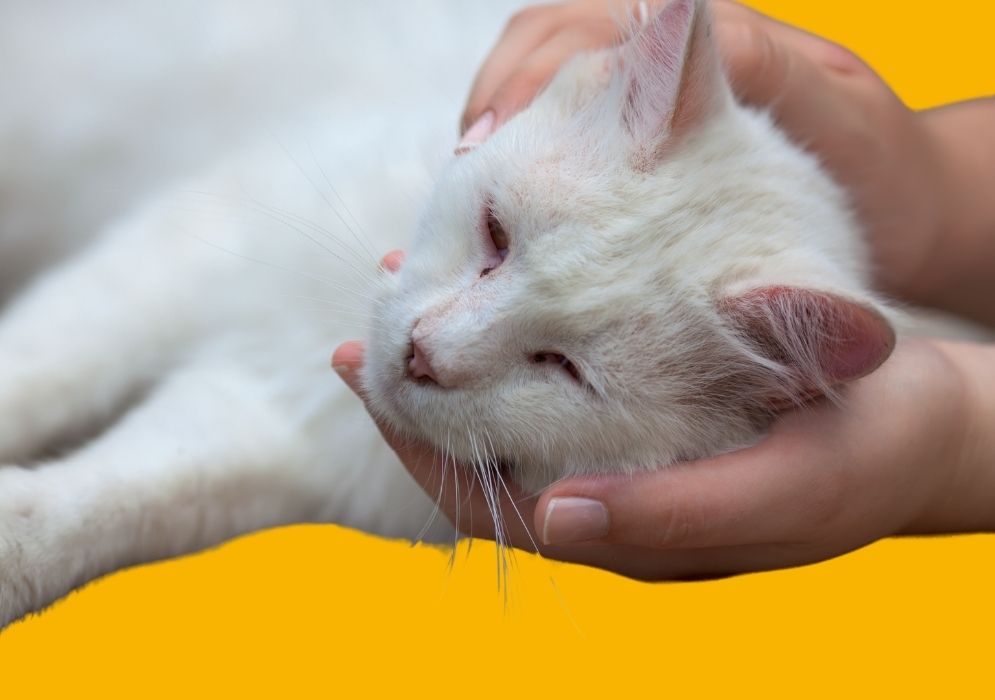
While the color and consistency of your cat’s vomit can provide valuable clues, it’s also important to understand the potential underlying causes of vomiting. Some common reasons for cat vomiting include:
- Dietary Changes: Sudden changes in your cat’s diet or the introduction of new food items can upset your cat’s digestive system, causing them to vomit.
- Food allergies or intolerances: Certain ingredients in your cat’s food may trigger an allergic reaction or sensitivity, leading to vomiting.
- Gastrointestinal issues: Conditions like inflammatory bowel disease, pancreatitis, or gastrointestinal obstruction can cause vomiting.
- Parasites: Intestinal parasites, such as worms or protozoans, can irritate the digestive system and lead to vomiting.
- Metabolic disorders: Conditions like diabetes, kidney disease, or liver disease can contribute to vomiting in cats.
- Motion sickness: Some cats may experience motion sickness during car rides or other forms of travel, leading to vomiting.
- Stress or anxiety: Emotional distress or changes in routine can sometimes trigger vomiting in cats.
When to Consult a Veterinarian?
While occasional vomiting may not be cause for immediate concern, there are certain situations when it’s essential to seek veterinary attention:
- If your cat is vomiting frequently or persistently
- If the vomit contains blood (red, brown, or black)
- If your cat is displaying other concerning symptoms, such as lethargy, loss of appetite, or dehydration
- If your cat is an elderly or very young kitten
- If your cat has a pre-existing medical condition
It’s always better to err on the side of caution when you are dealing with your cat’s health. So even if you dont find any of the above-mentioned situations in the cat vomit color chart, if your instincts say something is wrong, trust the same.
Call or take your cat to the vet as soon as possible. Your veterinarian will perform a thorough physical check-up, run diagnostic tests if necessary, and provide appropriate treatment or recommendations.
Preventive Measures for Cat Vomiting
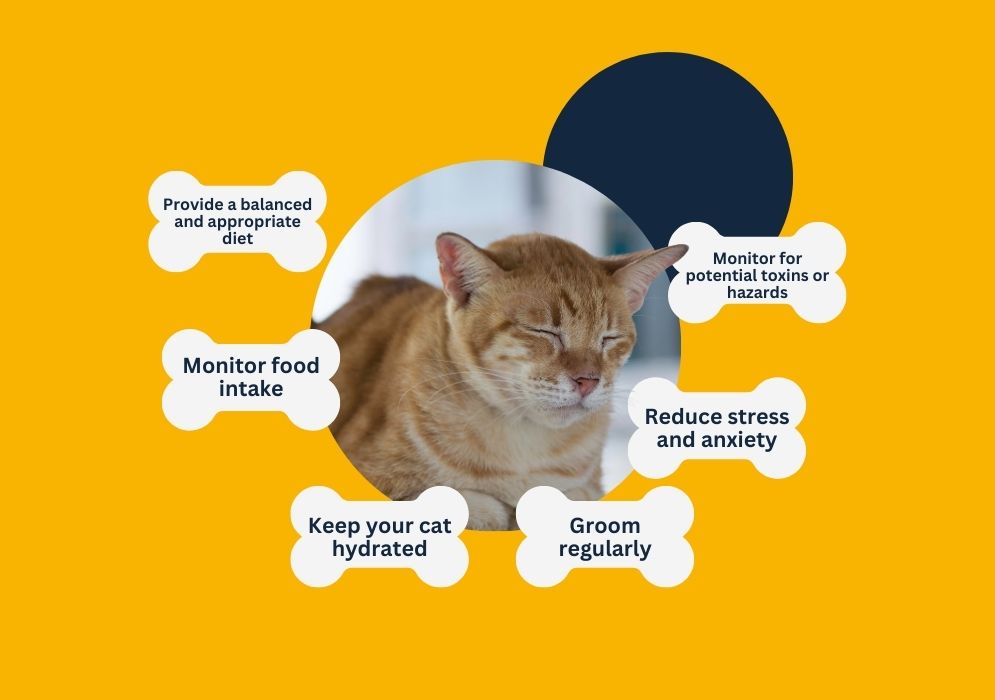
While some instances of vomiting may be unavoidable, there are several preventive measures you can take. This will help minimize the likelihood of your cat experiencing frequent or severe vomiting episodes:
Provide a Balanced and Appropriate Diet
Consult with your veterinarian to ensure you feed your cat a high-quality, nutritionally complete diet suitable for their age, breed, and specific needs.
Monitor Food Intake
Slow feeders or puzzle feeders can help prevent your cat from eating too quickly, reducing the risk of regurgitation.
Keep Your Cat Hydrated
Ensure your cat has access to fresh, clean water at all times to maintain proper hydration levels.
Groom Regularly
Regular grooming can help reduce the amount of hair your cat ingests during self-grooming, minimizing the risk of hairball-related vomiting.
Reduce Stress and Anxiety
Provide a calm, stable environment for your cat, and introduce any changes gradually to minimize stress and anxiety-related vomiting.
Monitor for Potential Toxins or Hazards
Keep household plants, chemicals, and other potential toxins out of reach to prevent accidental ingestion.
In addition to all the points mentioned here, you should also take your cat to the vet for regular checkups. During these visits, vets conduct thorough physical examinations, which can help identify and address any underlying health issue, of which one of the symptoms is vomiting.
Just remember, early intervention and proper care go a long way in making a significant difference in your cat’s health and well-being. Consequently, by keeping a vigilant eye on your cat and using the cat vomit color chart when necessary, you can help keep your cat healthy and happy for years to come.






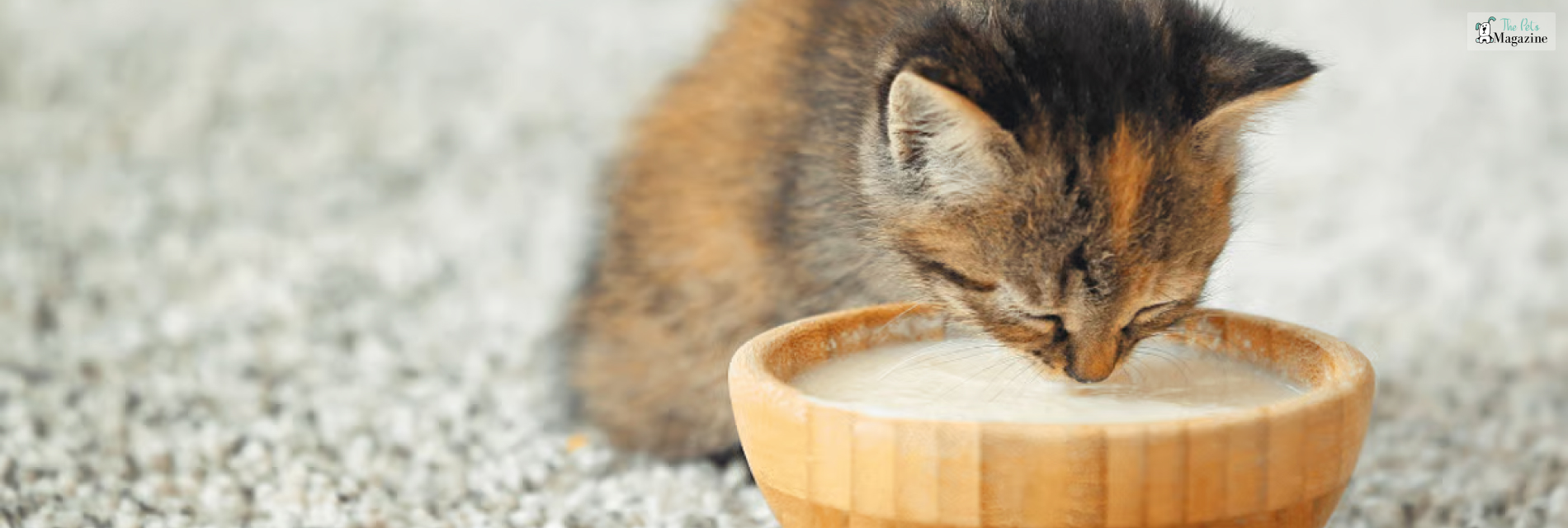

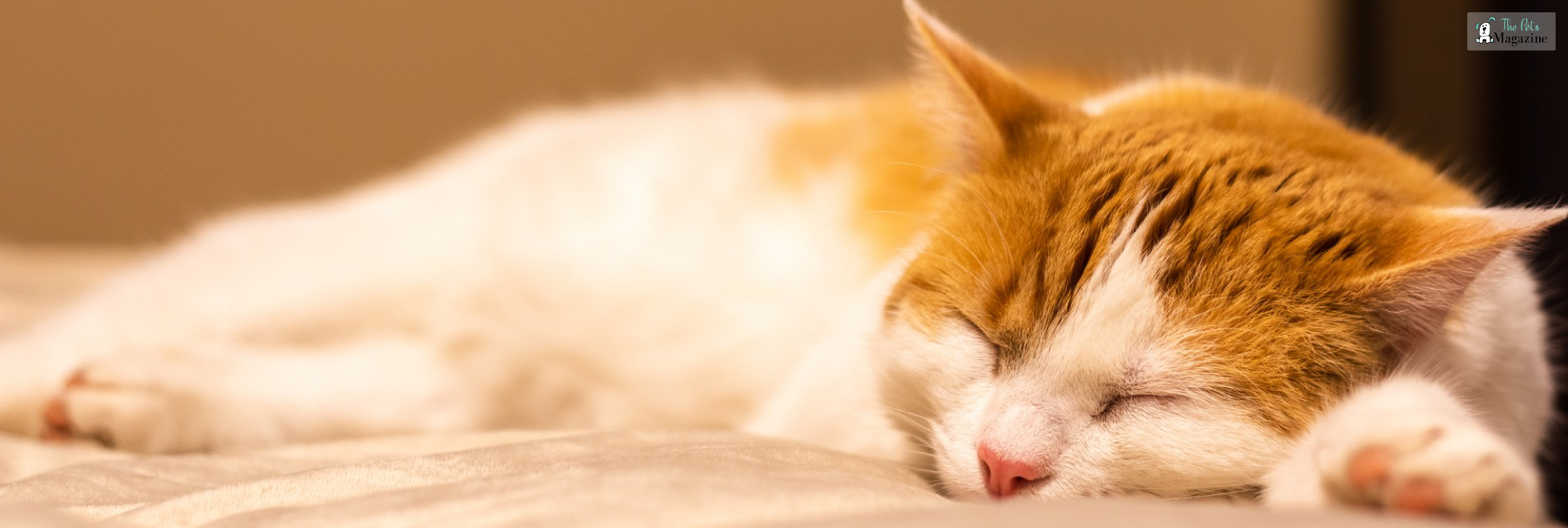
Leave A Comment